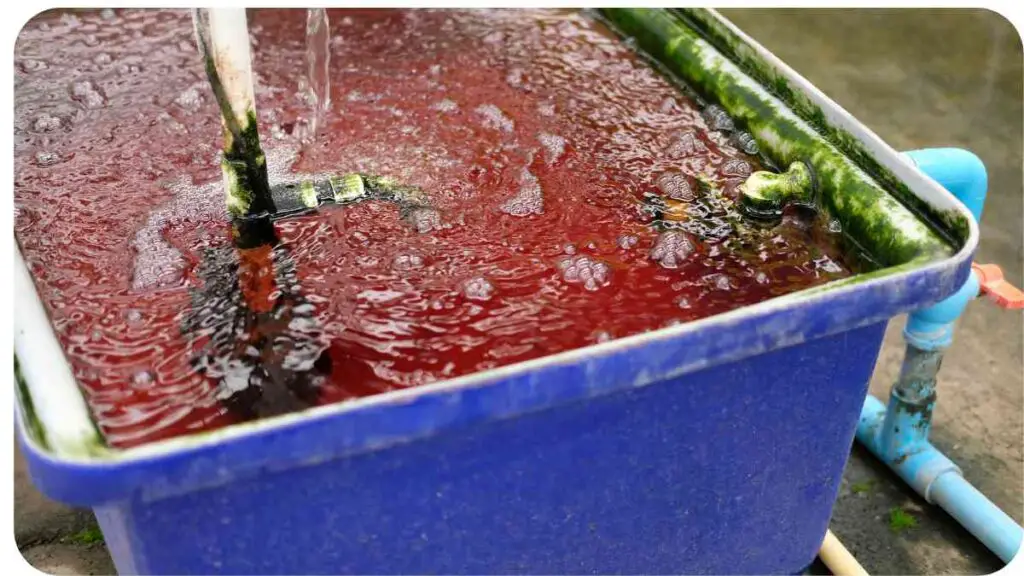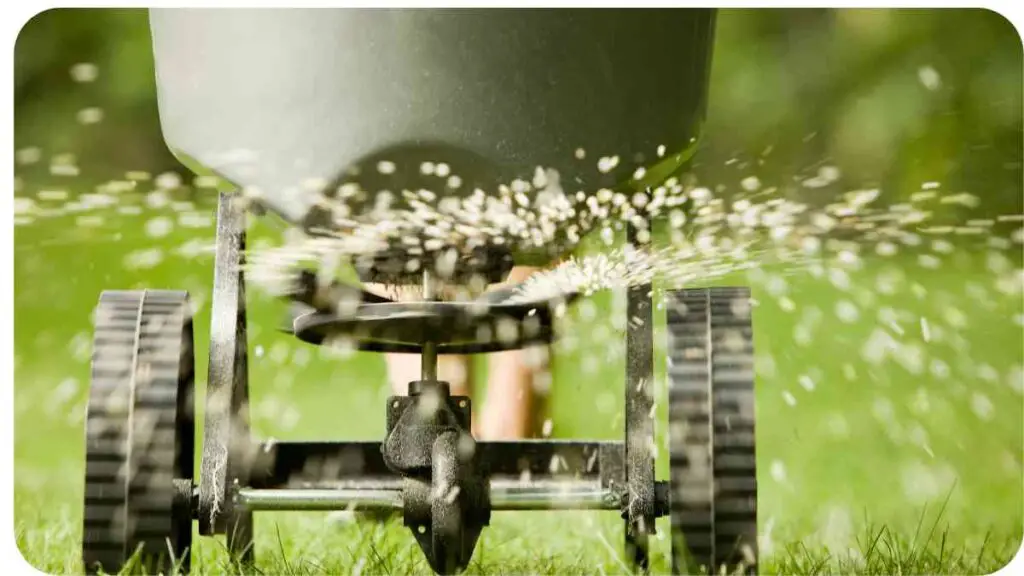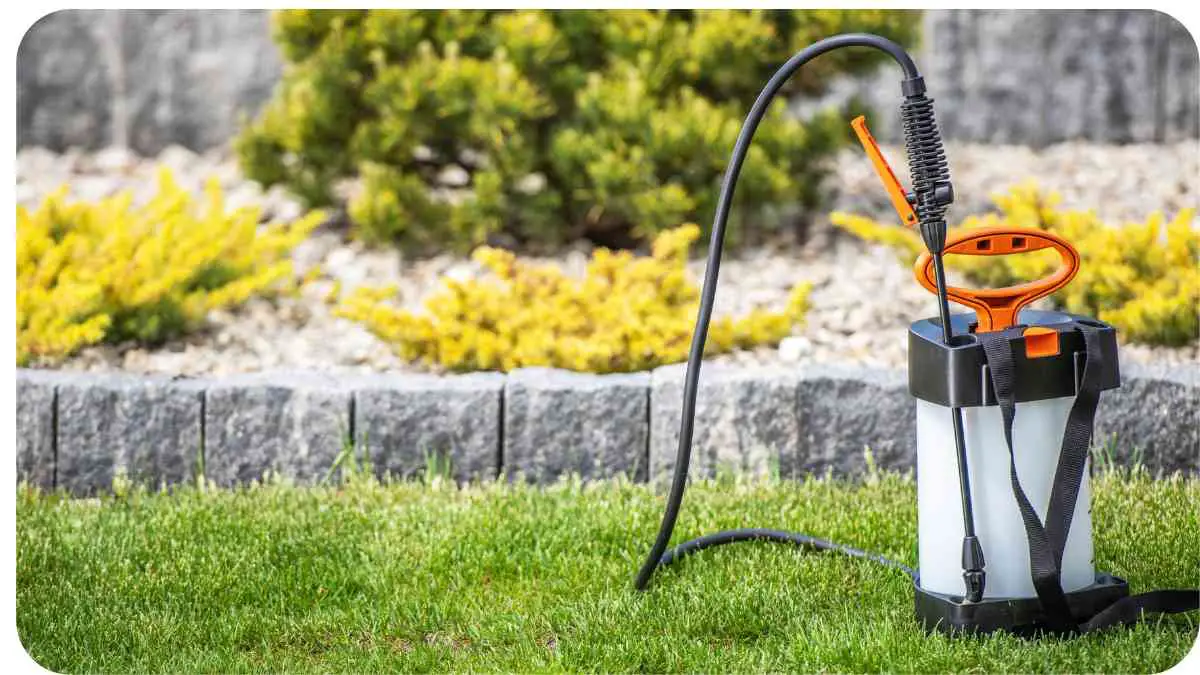When it comes to keeping your lawn lush and green, liquid fertilizer is a game-changer. But how often should you use it to get the best results? If you’re asking this question, you’re in the right place.
We’ll dive into everything you need to know to make the most of liquid fertilizer, from understanding its benefits to figuring out the perfect application schedule for your lawn.
| Key Takeaway |
|---|
| Liquid fertilizer is quickly absorbed by grass and provides fast results. |
| Frequency of application depends on grass type, climate, and soil quality. |
| Apply fertilizer every 4-6 weeks during the growing season for optimal results. |
| Use proper application techniques and follow product instructions to avoid over-fertilization. |
| Reduce fertilizer frequency in fall and winter; focus on minimal or no application during dormancy. |
| Ensure your lawn is well-watered and consider aeration to enhance nutrient absorption. |
| Address any issues like over- or under-fertilization promptly to maintain a healthy lawn. |
Understanding Liquid Fertilizer

What is Liquid Fertilizer?
Liquid fertilizer is a concentrated solution of nutrients designed to promote the healthy growth of plants, including grass. Unlike granular fertilizers, which need time to break down, liquid fertilizers are quickly absorbed by the grass roots, delivering nutrients efficiently.
Fixing burnt grass from over-fertilization can be tricky. If you’re struggling, check out this guide on how to fix burnt grass from too much fertilizer for practical tips to restore your lawn.
Benefits of Liquid Fertilizer
Liquid fertilizers offer several benefits:
- Fast Absorption: Nutrients are quickly taken up by the grass, providing rapid growth.
- Even Distribution: It ensures even coverage, reducing the chances of patchy growth.
- Flexibility: You can easily adjust the concentration based on your lawn’s needs.
Factors Influencing Fertilizer Frequency
Type of Grass
Different types of grass have varying nutrient needs. For instance, cool-season grasses like Kentucky Bluegrass require more frequent feeding during their active growth periods, while warm-season grasses such as Bermuda thrive on a different schedule. Here’s a quick comparison:
| Grass Type | Ideal Fertilizer Frequency | Growth Season |
|---|---|---|
| Kentucky Bluegrass | Every 4-6 weeks | Spring & Fall |
| Bermuda | Every 6-8 weeks | Summer |
Climate and Weather
Your local climate plays a significant role in how often you should fertilize. In cooler climates, the growing season is shorter, and you might need to fertilize less often. Conversely, in warmer regions, the growing season is longer, so more frequent applications might be necessary.
Want to enhance the green of your lawn effectively? Discover the best strategies in this comprehensive guide on greening up your lawn to achieve a lush, healthy look.
Soil Quality
The quality of your soil affects nutrient availability. Sandy soils drain quickly and may require more frequent applications, while clay soils retain nutrients longer and might need less frequent fertilization.
Best Practices for Applying Liquid Fertilizer

Timing and Schedule
Applying liquid fertilizer at the right time is crucial. Typically, you should fertilize during the growing season when the grass is actively growing. Here’s a seasonal guide:
| Season | Recommended Fertilizer Frequency |
|---|---|
| Spring | Every 4-6 weeks |
| Summer | Every 6-8 weeks |
| Fall | Every 6-8 weeks |
| Winter | Minimal to no application |
Application Techniques
Proper application techniques ensure even distribution and minimize waste. Use a calibrated sprayer or a hose-end applicator to apply the fertilizer. Always follow the manufacturer’s instructions for mixing and application rates.
Recommended Products
Here are a few liquid fertilizers you might consider:
| Product Name | Type | Best For |
|---|---|---|
| Miracle-Gro Liquid Feed | All-purpose | General use |
| Scotts Turf Builder | High Nitrogen | Quick green-up |
| BioAdvanced All-in-One | Organic | Eco-friendly option |
How Often Should You Fertilize?
Spring and Summer
During the warmer months, your lawn is growing rapidly, so it benefits from more frequent feeding. Aim to fertilize every 4-6 weeks to support vigorous growth and a lush, green lawn.
Planning to improve your lawn care routine? Learn how to draft a solid plan with our proposal guide for lawn care, designed to help you outline your maintenance strategies.
Fall and Winter
In fall, as growth slows, you can reduce the frequency of fertilization to every 6-8 weeks. During winter, most lawns go dormant, and fertilization is typically minimal or unnecessary.
Troubleshooting Common Issues
Over-Fertilization
Too much fertilizer can lead to excessive growth, increased thatch, and even lawn burn. If you notice these issues, reduce the frequency and amount of fertilizer.
Under-Fertilization
Signs of under-fertilization include yellowing grass and poor growth. If you see these symptoms, increase your fertilization frequency and check your soil’s nutrient levels.
Additional Tips for a Lush Lawn
- Watering: Ensure your lawn is properly watered to help the fertilizer work effectively.
- Aeration: Regularly aerate your lawn to improve nutrient absorption.
- Mowing: Maintain the right height for your grass to promote healthy growth.
Curious about the insects in your grass? Our detailed guide on identifying and managing bugs in your lawn will help you understand and tackle common lawn pests effectively.
Conclusion
Finding the right balance for using liquid fertilizer on your lawn is key to achieving that vibrant, green look you desire. By understanding the needs of your grass, the impact of your local climate, and proper application techniques, you can ensure your lawn gets the nutrients it needs to thrive. Happy fertilizing!
Further Reading
For more insights on lawn fertilization and care, check out these resources:
- Top Tips for Fertilizing Your Lawn: This guide offers practical tips for effective lawn fertilization, including best practices and common mistakes to avoid.
- Everything You Need to Know About Liquid Lawn Fertilization: A comprehensive resource on liquid lawn fertilization, covering various types, benefits, and application methods.
- Pros and Cons of Liquid Lawn Fertilizer: An article discussing the advantages and disadvantages of using liquid fertilizer, helping you make an informed decision.
FAQs
How often should I use liquid fertilizer on my lawn?
The frequency of applying liquid fertilizer depends on your lawn type and local conditions. Generally, during the growing season, fertilize every 4-6 weeks for best results. In cooler months, reduce the frequency to every 6-8 weeks.
Can I over-fertilize my lawn with liquid fertilizer?
Yes, over-fertilization can lead to excessive growth, thatch build-up, and potential damage to your lawn. Always follow the recommended application rates and adjust based on your lawn’s needs.
What is the best time to apply liquid fertilizer?
The best time to apply liquid fertilizer is during the active growing season of your grass. For cool-season grasses, this is typically in early spring and fall. For warm-season grasses, fertilize in late spring through summer.
How should I prepare my lawn before applying liquid fertilizer?
Before applying liquid fertilizer, mow your lawn and ensure the soil is moist. Avoid applying before heavy rain, which can wash away the nutrients. Also, ensure the fertilizer is evenly distributed using a proper applicator.
Are there any environmental concerns with using liquid fertilizer?
Yes, improper use of liquid fertilizer can lead to runoff, which may contaminate water sources. To minimize environmental impact, use the recommended amounts, avoid over-application, and apply during dry periods to allow absorption.

For 15 years, Hellen James has worked in the gardening industry as an expert and landscape designer. During her career, she has worked for a variety of businesses that specialize in landscaping and gardening from small firms to large corporations.

